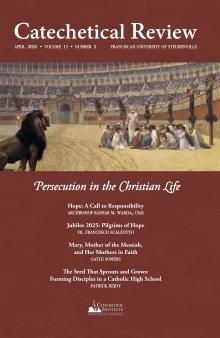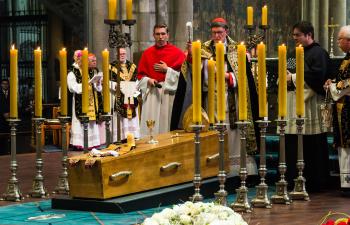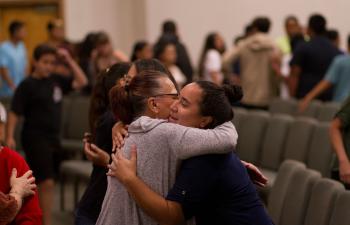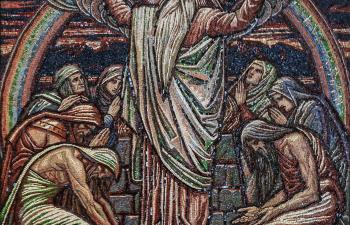 Many catechists yearn for a specific, detailed order, or pre-set curriculum of OCIA teachings, but the universal Church is unlikely to ever mandate one beyond that which exists in a general form in the Creed itself.[1] While it is true that “authentic catechesis is always an orderly and systematic initiation into the revelation that God has given of himself in Christ Jesus,”[2] the General Directory for Catechesis (GDC) states:
Many catechists yearn for a specific, detailed order, or pre-set curriculum of OCIA teachings, but the universal Church is unlikely to ever mandate one beyond that which exists in a general form in the Creed itself.[1] While it is true that “authentic catechesis is always an orderly and systematic initiation into the revelation that God has given of himself in Christ Jesus,”[2] the General Directory for Catechesis (GDC) states:
Indeed, “it can happen that in the present situation of catechesis reasons of method or pedagogy may suggest that the communication of the riches of the content of catechesis should be organized in one way rather than another.”[3] It is possible to begin with God so as to arrive at Christ, and vice versa. Equally, it is possible to start with man and come to God, and conversely. The selection of a particular order for presenting the message is conditioned by circumstances, and by the faith level of those to be catechized. (GDC 118)
It cannot be emphasized too strongly that the means of determining the order of catechesis for a given set of participants must take into account liturgical, catechetical, and pastoral considerations at a given parish in a given year, as is laid out below. Taking all of the above into account, this article presents three methods that, when considered together, enable a catechist or OCIA director to order teachings in a way that serves the content of the faith.
The rest of this online article is available for current Guild members.
[1] Sacred Congregation for the Clergy, General Catechetical Directory (1971), no. 46. Hereafter cited in text as DCG.
[2] John Paul II, Catechesi Tradendae, no. 22, quoted in Congregation for the Clergy, General Directory for Catechesis (USCCB, 1997), 66.
[3] Catechesi Tradendae, no. 31.
[4] International Commission on English in the Liturgy, The Order of Christian Initiation of Adults (2024).
[5] Second Vatican Council, Unitatis Redintegratio, no. 11.
[6] Catechesi Tradendae, no. 5.
[7] Cf. Second Vatican Council, Lumen Gentium, no. 58; John Paul II, Redemptoris Mater, no. 18.
[8] Cf. Lumen Gentium, no. 9, § 2; no. 48, § 2; Second Vatican Council, Gaudium et Spes, no. 45, § 1.
Art Credit: Scott Wagner, Flickr.com, CC.
This article is from The Catechetical Review (Online Edition ISSN 2379-6324) and may be copied for catechetical purposes only. It may not be reprinted in another published work without the permission of The Catechetical Review by contacting [email protected]


















